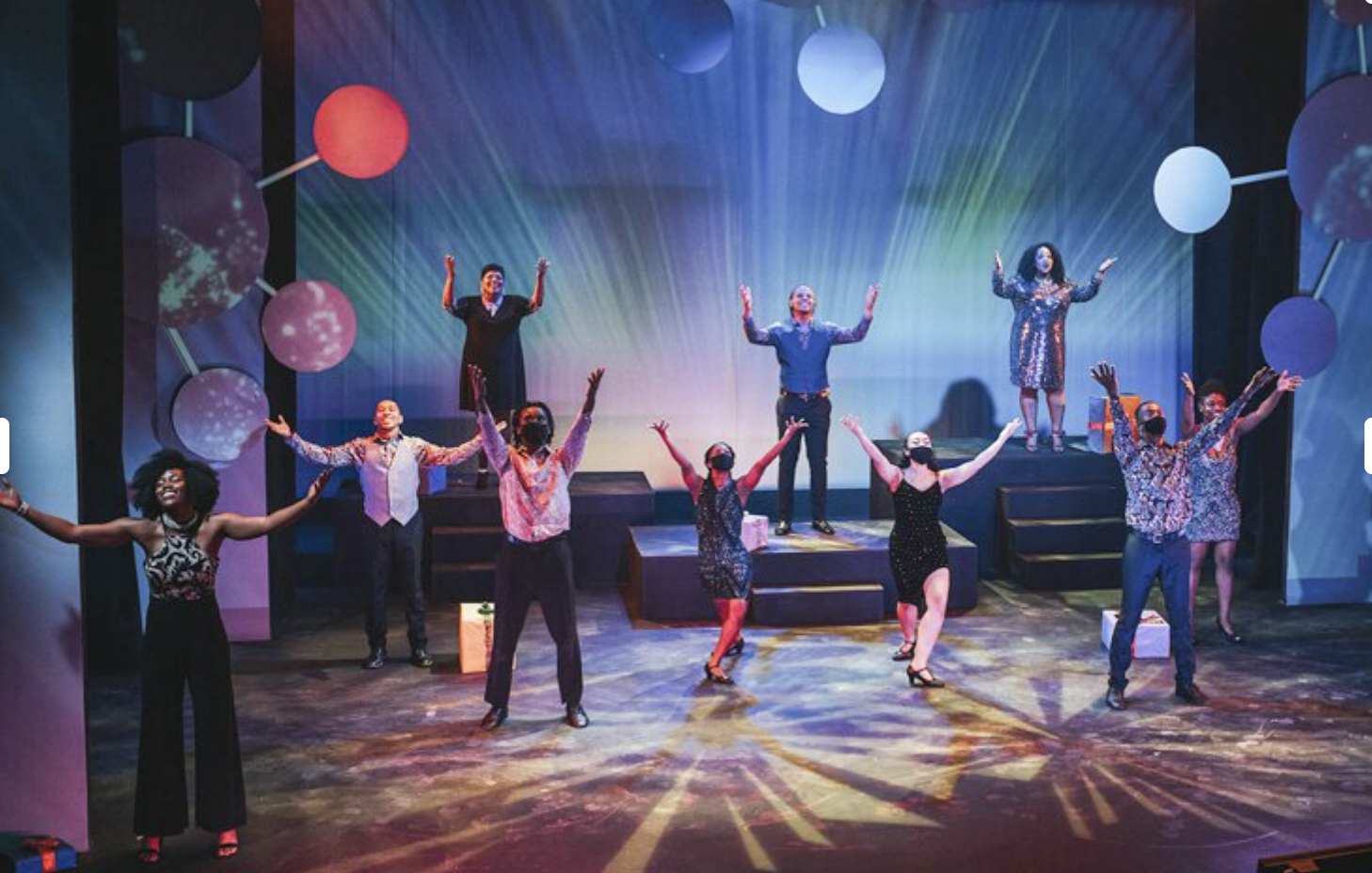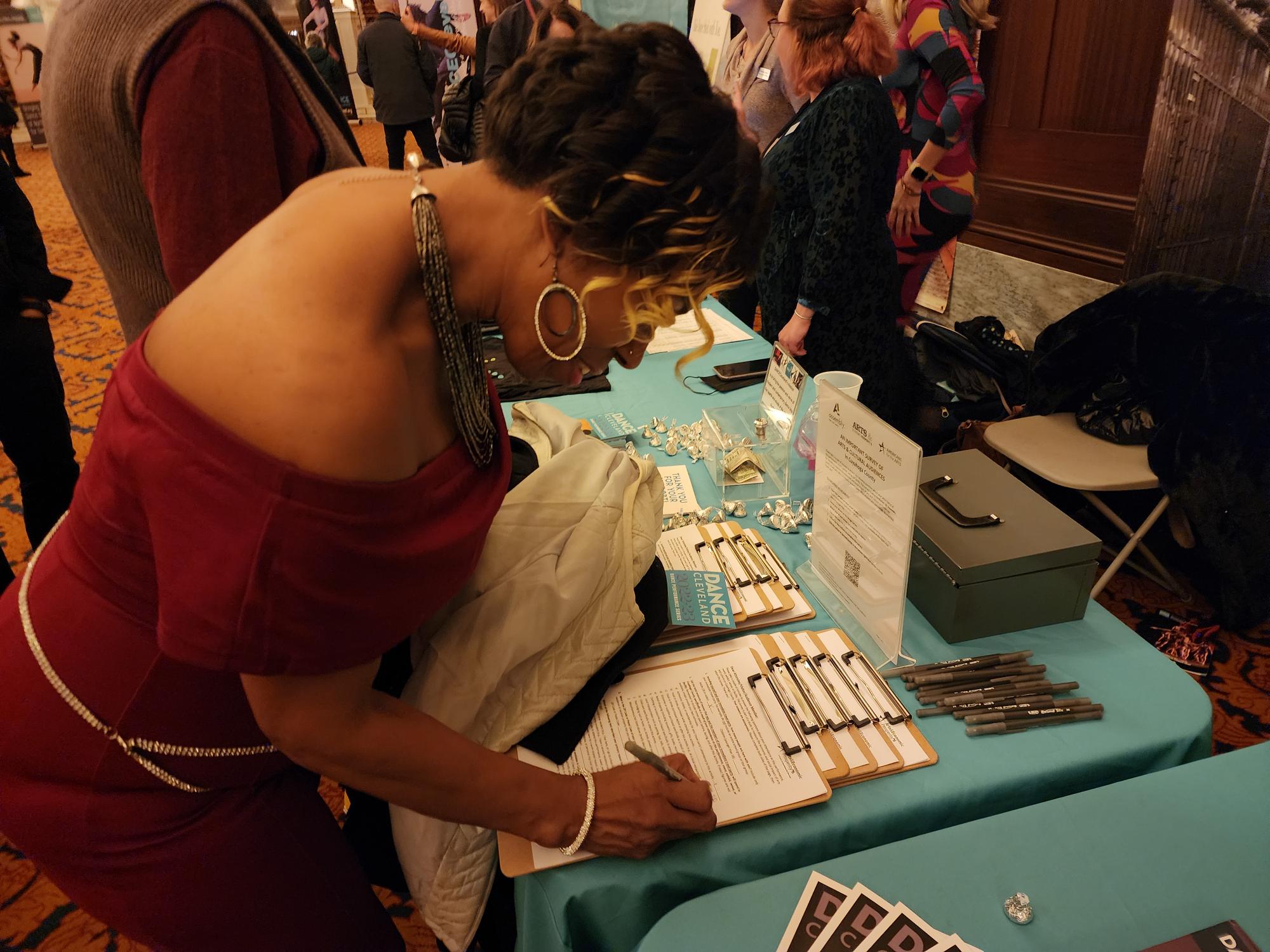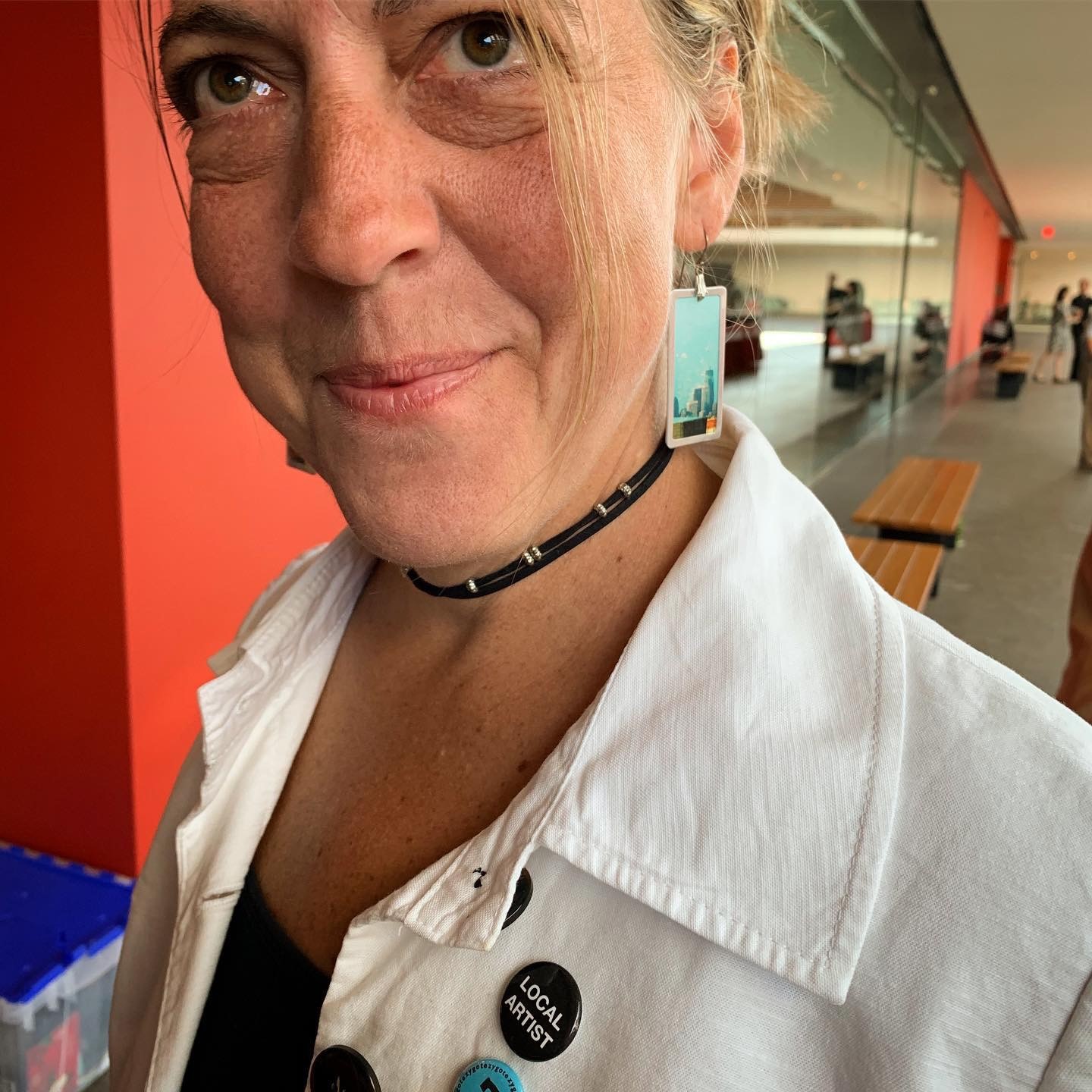Where Cleveland artists can affordably live and create is up for discussion Thursday
Source: ideastream
Date: April 10, 2023
Abstract:
Greater Cleveland’s creative sector, still recovering from the pandemic, is considering where it will live and work in the future. A recent survey of Cuyahoga County artists receiving ARPA funding found that 79% were concerned about having enough money to pay bills. A panel discussion Thursday brings together artists, community leaders and real estate professionals focused on ways to make housing and creative space more accessible and affordable.
Cuyahoga Arts & Culture approves 2023 grants for six organizations
Source: Karin Connelly Rice, Freshwater Cleveland
Date: December 15, 2022
Abstract: At its regular meeting of the Cuyahoga Arts & Culture board of trustees yesterday, Wednesday, Dec. 14, the board voted to approve six Northeast Ohio arts organizations for 2023 grant funding.
The board approved resident-led arts and culture grants to Neighborhood Connections and ioby in our own back yards). Neighborhood Connections received $60,500 to co-fund resident-led projects in Cleveland and East Cleveland and host five in-person gatherings for artists, arts & culture organizations, and residents in 2023; while ioby received $100,000 for the Cuyahoga Arts & Culture Match Fund to support resident-led arts and culture projects in Cuyahoga County in 2023.
Assembly for the Arts opens applications for ARPA funding to artists and creative businesses
Source: Freshwater Cleveland
Published: Wednesday, August 24, 2022
Abstract:
Assembly for the Arts (Assembly), a cultural nonprofit that strengthens and supports those who create, present, experience and appreciate all forms of arts and culture, announced on Monday, Aug. 22 that applications are now open for creative workers and for-profit creative businesses to apply for funding made possible by the American Rescue Plan Act (ARPA) through Cuyahoga County Council and the County executive Armond Budish.
Assembly for the Arts Opens Applications for ARPA Funding
PRESS RELEASE
August 22, 2022
Media Contact:
Malissa Bodmann
216-536-7517
ASSEMBLY FOR THE ARTS OPENS APPLICATIONS FOR ARPA FUNDING
Artists, for-profit creative businesses are eligible to apply
CLEVELAND, OHIO — Assembly for the Arts announced today that applications are open for creative workers and for-profit creative businesses to apply for funding made possible by American Rescue Plan Act through Cuyahoga County Council and the County Executive.
Assembly for the Arts and Cuyahoga Arts & Culture worked collaboratively to secure support from Cuyahoga County Executive Armond Budish and County Council President Pernel Jones, Jr. County Council approved $3.3 million, which was evenly split between Assembly and CAC ($1.65 Million to each).
Assembly will award funding ranging up to $2,500 per artist and up to $45,000 for businesses, depending on annual revenue. Professional creative artists aged 18 and older who live in Cuyahoga County and have lost income due to the COVID-19 pandemic may be eligible for these ARPA funds. For-profit creative arts business headquartered in Cuyahoga County that have lost revenue due to the COVID-19 pandemic may be eligible for these ARPA funds. Visit https://assemblycle.org/arpa/ for eligibility guidelines and application.
“The arts and culture sector was the hardest hit of all industries during the pandemic,” said Jeremy Johnson, President and CEO of Assembly for the Arts. “We know this ARPA funding will help artists and small creative businesses get back on their feet to reignite the diverse cultural jobs and services that are the backbone of a $1.9B creative regional economy.”
Assembly will hold a series of information sessions on the application process for artists and for-profit creative businesses. Visit https://assemblycle.org/arpa/ for more information.
About Assembly for the Arts: Assembly for the Arts is a 501c3 nonprofit organization that serves as a unifying voice for greater Cleveland’s creative sector. Assembly strengthens and supports those who create, present, experience and appreciate all forms of arts and culture. The organization is attentive to the needs and impact of BIPOC artists, nonprofits, and small creative businesses. Assembly seeks to expand the pie of financial, technical, and capacity support for the arts and cultural sector; and increase equity for BIPOC and historically disadvantaged communities within the sector. For more information, visit AssemblyCLE.org.
City of Cleveland - Recommendations for an Arts-Inclusive City
The creative and cultural industries in Cleveland are a core part of our city’s success and vitality.
We define arts and culture in its broadest sense encompassing art forms ranging from traditional to contemporary. According to data from Creative Vitality Suite, in 2019, the City of Cleveland had 15,849 jobs by creative industries alone, generating $2.9b in sales within our local economy. While arts and culture drive economic growth and regional tourism, research also consistently reveals the positive influence the arts have on other sectors including education, healthcare, public safety, mental health, community revitalization and our region’s competitiveness in other markets.
Despite the facts, Cleveland is still one of the largest cities in the country that does not currently support or promote arts and culture in its government structure. A permanent infrastructure and City Arts and Culture Liaison with a clear set of goals and strategies, will allow our city to leverage the potential of our arts and cultural assets, as well as provide much–needed support and recognition for our creative workers. The mayor has publicly recognized the need for an arts-supportive infrastructure and we are confident this promise will be delivered on.
The following recommendations were developed with the arts and culture community, facilitated by Assembly for the Arts.
Create an Infrastructure in City Hall Dedicated to the Creative and Cultural Industries
Recommendations:
- Secure the right person for a cabinet-level position for arts and culture (see ROLES)
- Establish and work with an arts and culture community advisory group, comprised of individual artists and representatives of nonprofit organizations and creative businesses
- Recognize and leverage the work of current city staff dedicated to arts and culture. Establish an arts and culture line item in the administration’s budget to support the work outlined below
- Infuse arts and culture into the city’s committee structures and departments, such as community development, economic development, health and human services, public safety and education
Selecting an individual to lead these efforts within the administration will be critical. We recommend the establishment of an Arts and Culture Community Advisory group to supply necessary information about the local creative and cultural economy to aid the mayor in making informed decisions on potential candidates, as well as purpose and goal development for the Department of Cultural Affairs. To jumpstart this process, we recommend working with existing and established arts community coalitions including: Artist Bridge Coalition, Assembly for the Arts, Black Local Artists of Cleveland – Kuumba, Cleveland Arts Education Consortium, Collective Arts Network, National Independent Venue Association and Third Space Action Lab.
Budgeting will be equally important – developing a process to determine both the amount of available funding within the existing budget and how much will be needed to carry out the goals of the department is a necessary initial step.
Establish Purpose and Role of the Arts Infrastructure and Arts Liaison
The definition and title of the cabinet-level position will be important in setting the tone for the department and scope for which it will engage with, include and represent the community. Defining the department’s role(s) clearly will lay the groundwork for successful implementation of the Phase 4 work.
Recommendations: Select the best candidate
- Carefully consider the position title and how it will represent both community and city; consider traditional, non-traditional, contemporary and historic arts practices
- Ensure the candidate is deeply embedded and connected to the arts community
- Ensure the candidate has a strong understanding of DEI, BIPOC communities and Accessibility practices
- Ensure the candidate is equitable in their approach to the arts community
Recommendations: Define the Department’s Role
- Manage a coordinated effort to empower and promote the work of all Cleveland’s arts and culture stakeholders
- Oversee and manage the identity of Cleveland as an arts city
- Assist the mayor in developing an effective narrative about the power of the arts and their relationship to the city
- Coordinate and steward a downtown arts and culture district, which includes a cohesive and well-communicated programming agenda
Sanction and Execute a City Cultural Planning Process Driven by Cleveland’s Arts Communities
A key component of the newly developed city arts infrastructure will be the execution of a city-wide cultural planning process. This process will enable the city to identify needs, scope the landscape of the arts community and develop a set of strategies and tactics to support the arts community, leverage our creative and cultural assets and increase resident engagement with arts and culture.
Recommendations: Cultural Plan
- Establish a creative and cultural industry taskforce specified for this process
- Identify a research scope to launch the cultural plan process
![]()
1: Allocate ARPA funds to the arts and culture sector in 2022:
Allocating American Rescue Plan Act (ARPA) funds to creative businesses, nonprofits and individual artists across the City of Cleveland who have been devastated by the COVID-19 pandemic will act as both a substantive and symbolic effort in the new administration’s support of the creative and cultural economy. We recommend working with Assembly for the Arts and Cuyahoga Arts & Culture to bring this funding distribution to fruition.
2: Center Arts and Culture in Racial Equity and Inclusion and Other City-wide Planning by:
2a. Integrate arts and culture into city task forces addressing Racism as a Public Health Crisis
2b. Integrate arts and culture into efforts around improving internal city affairs processes including government policies contributing to the systemic racism, siloed departments, city staff communications and morale, slow response rates for residents and others
2c. Partner with arts and cultural groups to enhance public safety efforts
2e. Prioritize neighborhood cultural preservation
![]()
3: Expand the City’s Definition of Arts and Culture:
Cleveland’s arts and culture sector and creative industries represent a broad range of individuals, cultures, institutions, organizations, disciplines, events and experiences. Recognizing and understanding the contributions that all parts of the creative ecosystem make to our city’s vibrancy, economic development and overall progress will be key when developing an effective narrative of Cleveland as an arts-rich city
![]() 3a. Include individual artists, creative for-profit businesses and arts and culture nonprofits in the city department scope of work
3a. Include individual artists, creative for-profit businesses and arts and culture nonprofits in the city department scope of work
![]() 3b. Recognize an expanded range of creative disciplines in city-wide arts and culture planning decisions, including but not limited to craft, dance, design, film, literature, media, music, performance, theatre and visual arts
3b. Recognize an expanded range of creative disciplines in city-wide arts and culture planning decisions, including but not limited to craft, dance, design, film, literature, media, music, performance, theatre and visual arts
4: Develop a Cohesive Multi-Disciplinary Arts Programming Agenda including:
4a. Establish a City of Cleveland Artist in Residence program
4b. Sustain public art programming including funding for the established Mural My Neighborhood program
![]() 4c. Support BIPOC Creative workers through commissions, grants and fellowships
4c. Support BIPOC Creative workers through commissions, grants and fellowships
4d. Build a cohesive arts events communication structure. Continue and build upon arts programming from the prior administration
5: Elevate and Protect Creative Workers Driving Neighborhood Development:
The arts and culture communities have been core partners in the successful redevelopment of Cleveland’s most notable destination neighborhoods like Tremont, Gordon Square, and the Waterloo Arts District. Artists and creative businesses are often the driving forces and pioneers for these redevelopment efforts. We recommend a coordinated effort to mitigate gentrification and the displacement of the creative people and businesses in these and other developing areas.
5a. Work within community development programs and policies to extend support to artists and creative businesses
5b. Invest in arts spaces for necessary accessibility-related infrastructure updates
5c. consider a reduced tax rate for the sale of artwork and tax abatements for renovation
5d. Consider piloting programs to standardize wages and guarantee basic income for creative workers
5e. Address the admissions tax for small and mid-size music venues
5f. Reduce restrictive permitting and lessen bureaucracy for events, such as outdoor arts events, busking, and other publicly restricted arts activities
6: Work Closely with CMSD to Enhance Arts Education:
The Cleveland Metropolitan School District (CMSD) has committed $32M for Year 1 of a District-wide Arts Plan for K-12 students. We recommend the administration support the continuation of this new plan:
6a. Partner with CMSD’s Director of Arts Education and the Cleveland Arts Education Consortium
6b. Communicate with large and small arts organizations providing school programming to understand needs
6c. Support safe and equitable student access to these arts programs during out of school time
6d. Support the District’s tech needs and purchase of visual art supplies and musical instruments
7: Brand Cleveland as an Arts City:
7a. Partner with Destination Cleveland and Assembly for the Arts to expand and better define arts promotion
7b. Include arts and culture prominently on the City’s website
7c. Promote a developed narrative that speaks to the power of arts and culture and its importance within the city and across sectors
The following items are recommended as priority goals for the City Arts and Culture Liaison and corresponding staff structure.
ARPA Funding Program
Funding Status Notifications were emailed on November 8, 2022 to all applicants of the Cuyahoga ARPA for Arts program through Assembly for the Arts.
Notifications were sent to the email address provided in your application. Be sure to check your spam and junk email folders.
If you submitted an application and have not received a Funding Status Notification, please contact arpa@assemblycle.org
If you received your Funding Status Notification and have questions about receiving your relief funds, please carefully review the materials included in your award email. If your questions are still unanswered, please email arpa@assemblycle.org. Due to the influx of inquiries and attention to detail required to process funds responsibly, staff will not be returning phone calls unless immediate action is required.
Notes about receiving your ARPA relief funds
Watch this video to walk through completing forms and BILL.com.
Complete Your Forms
All artists and businesses receiving funds must complete and submit a W-9 form to process their payment. You can do this one of two ways:
-
- Electronically (easiest): Use the DocuSign link in your award email.
- Print and mail in a complete W-9 form to: Assembly for the Arts, 1900 Superior Ave., Suite 130, Cleveland, OH 44114
Direct Deposit
- Your ARPA funds can be received through direct deposit (ACH)
- You must either complete the ACH Form or disable the form included with your electronic W-9 to move to the next payment step. To disable the form, click the Opt-out button at the bottom of the direct deposit instructions page.
- All ARPA funds recipients will receive an email invite through Bill.com to process your payment as a direct deposit. PLEASE NOTE – you will not receive this invite until Assembly has your completed W-9 form
Other Options
- You can choose to submit your W-9 by mail (see address above) and receive a paper check.
- All paper checks will be processed after direct deposit payments
- Paper checks can take up to two weeks to reach you, after Assembly has received and processed your complete and accurate W-9 by mail
Applications are now closed
The deadline to apply for these funds was September 30, 2022
Frequently Asked Questions (FAQ)
I applied but can’t find my funding notification email. Where is it?
All applicants of the Cuyahoga ARPA for Arts program were emailed a final funding status update on November 8, 2022 from Assembly. These notifications were sent to the email address you supplied in your application. If you’re unable to locate your email notification, please be sure to check your spam, junk and promotions folders. You can also search “ARPA” or “Assembly” in your email search bar. All notifications came from arpa@assemblycle.org.
I don’t have any checks. How do I include a voided check with my ACH form?
If you do not have any checks, please take a screenshot of your banking routing number and account number from your banking mobile app. You can also request starter checks from your bank, most banks will give those out for free.
If you’re still having trouble, please Disable the ACH form using the button at the bottom of the direct deposit instructions page included with your DocuSign forms.
I submitted my DocuSign documents. Did Assembly receive them?
If you were able to complete, electronically sign and click the submit button, your documents were successfully submitted! If you saw a pop-up confirmation when you clicked Submit, you’re all set. You may not receive a DocuSign confirmation email, but do not worry, it is likely your documents were still received successfully.
Please do not contact Assembly offices for a document receipt confirmation or submit a second DocuSign packet. Doing so will delay your payment. An Assembly team member will reach out to you directly if there is an issue with your payment information. So no news from Assembly is good news.
I submitted my DocuSign documents. Where’s my invite from Bill.com?
Please hang tight. Within approximately 7-10 business days your W-9 will be processed. Once processed, you will receive an email from Bill.com inviting you to create an account. All Bill .com invites will come from Bill. com, not Assembly. Please DO NOT create a Bill .com account without having received this invitation. Getting an auto-reply email from Assembly after emailing ARPA @assemblycle.org is not an invitation to Bill .com. Please monitor your inbox carefully.
Please also keep in mind that Assembly is a small staff and is processing hundreds of W-9s; Bill.com invites will be sent on a rolling basis as all applicant paperwork is processed.
When will I receive my ARPA funds?
Funding distribution timing will vary depending on when your payment information is received and processed. Please do not call Assembly offices to inquire about disbursement timing.
ARPA payments will be disbursed on a rolling basis depending on when your information is received and processed. We are working hard to ensure that all payments go out as quickly as possible.
When should I contact Assembly about ARPA?
If you have not received a Bill .com invite or further information to process your payment by December 1, 2022, email arpa@assemblycle.org. If you have not received your ARPA funds disbursement by December 15, 2022, please email us at the address above.
If you are having tech difficulties with any platform or require assistance due to a disability, please contact arpa@assemblycle.org.
About Rescue Funds
On March 28th, Cuyahoga County Executive, Armond Budish announced that $3.3 million in American Rescue Plan Act (ARPA) funds have been dedicated to arts and culture .
Assembly for the Arts and Cuyahoga Arts & Culture partnered to distribute these dollars directly to the community through special relief funding programs for nonprofit organizations, individual artists and creative businesses. You can still Tweet, email and thank your County reps for their support and consideration.
Assembly will distribute $1.65 million of these funds to Artists and Creative For-Profit Businesses. Nonprofit Organizations were invited to apply for funds through Cuyahoga Arts & Culture. Visit CAC’s website for more information on their ARPA funding program.
Get Involved
Get Involved
Learn from Issues
If you are interested in being more politically active, or at least more publicly engaged, the best place to start is by building the foundation. Assembly has developed some content on arts advocacy that provides a good place to start.
Know Your Public Officials - and What They Are About
For many of us, our interaction with our public officials ends when we submit our ballot; however engaging in our community leaders’ decisions should not stop there. Public officials are in place to represent our best interests. As their constituents, we should take the time to learn more about them. What are her goals? What is his voting record? What is on the agenda at the next public meeting? Before you send an email or make a phone call to share your opinion, remember that public officials were put in place because of their own values and decision-making strategies. Understand where your representative is coming from and learn more about the issues they care about. Once you have that knowledge, you will be in a much better position to share how your interests may align with their goals and the goals of your community.
Become an Artist Activist
Once you have the knowledge you need, make your move. We talked a lot about being an artist activist in our From Rust Belt to Artist Belt 2 conference; here are some key strategies you can follow to be successful:
Start early
- Start early; and if you can’t, do not let that discourage you from starting at all
- Officials are sometimes the obstacles, so work on campaigns and become involved in the political process to help get the best ones elected
- Familiarize yourself with the bureaucratic process
Bring the arts to them
- Bring public officials into direct contact with the arts by inviting them to special events, adding them to your mailing lists and regular sending press releases to them
- Counter misinformation and stereotypes of artists and the artistic community
Get a group together
- Put together a coalition among peers to build consensus on which policy goals to prioritize
- Reach out to everyone, even those who may not be known arts supporters; you never know what passion or connection they may harbor for the arts
- Enlist the help of friends with additional connections and form strategic alliances
Refine your message
- Make sure what you are asking is doable. Be united around a workable and well-thought-out plan. Use data to support your case or demonstrate economic benefits like job creation.
- Strategically frame your cause to appeal to the broader community in order to get the attention of public officials. Communicate the benefits of your plan so they can understand and help you communicate its value.
- Presenting your message may be even more important than the message itself. Tell moving and interesting stories to help you appeal to the human side (as opposed to the data-driven side) of officials.
- Don’t be discouraged if you are not initially heard. Persevere and build a bigger voice by collaborating. As you build your movement, check to see if you are advocating for the same end goal as a larger group or sector. Use their size to help you win support for the cause. You may have to give up a little control to achieve a mutual end result; however, a success after all your efforts will be worth it.
Build relationships
- Establish relationships with key leaders like government administrators and elected officials before you need something
- Ask good questions, especially those that help you figure out the official’s taste in the arts. What would motivate her to help? What end result he trying to achieve?
- Ask for advice and referrals. This will enable you to reach more people and will add buy-in for your public official
- Find common ground, make a connection and help your officials realize the win-win for you and their constituents
Arts Advocacy Tools
Helping inform public decisions is our role as citizens and is possible at every level. Advocacy may seem unrelated to your art, but policies are affecting us. Artists are in a unique position to communicate our public value creatively and inform community leaders throughout greater Cleveland about our needs and the impact our creative practices have on their communities.
This information is intended for both novice and expert. These articles and resources will arm you with the information you need no matter how deep you want to go with advocacy work.
You’re not in it alone!
Assembly is always here to field a question or find you resources to help you be successful. We offer on-site training for organizations’ staff and board, and we are happy to meet with individuals with questions or to help solidify ideas. There are also plenty of artists working in this arena and there is power in working together, rather than duplicating work. We can help get you connected.
Advocacy is defined as any action that speaks in favor of, recommends, argues for a cause, supports or defends, or pleads on behalf of others. This fact sheet offers a look at how advocacy is defined and what kinds of activities comprise advocacy work.
How is advocacy different than lobbying?
Lobbying is only one kind of advocacy. Not all advocacy is lobbying but all lobbying is advocacy.
What kind of activities comprise advocacy work?
The following list of advocacy activities is not exhaustive.
- Organizing: Build power at the base. Organizing constituents and organizations around a common advocacy message allows for mobilization during critical times.
- Educate Public Officials: Provide information on issues. Offering fact sheets, research or other information on your issues will educate public officials on the critical issues facing the people you serve.
- Regulatory efforts: Take action at the agencies. Work with regulatory agencies to change public policies in ways that positively impact the population your organization serves.
- Public education: Educate the community on the issues. There are many ways to educate the general public on your issues.
- Nonpartisan voter mobilization: Encourage citizens to vote. Engage in a campaign to register individuals to vote and encourage them to do so.
- Educational conferences: Gather, network, share information, and plan for the future. Convene to discuss issues and strategies affecting your targeted community.
- Lobbying: Advocate for or against specific legislation. All nonprofits are permitted to lobby. 501(c)(3) public charities can engage in a generous but limited amount of lobbying.
How can your organization get more involved in advocacy?
- Educate. Inform your organization about current policies and problems affecting your community.
- Evaluate. Evaluate your organization’s mission and goals, and examine whether current programs involve advocacy as a means to address problems or grievances in the community. If not, how could advocacy play a larger role in your organization’s programs?
- Collaborate. Work in coalitions with groups whose philosophy and goals resonate with yours. Together, pooling staff and resources, all parties involved in the coalition should be equipped to take on campaigns and work for change.
Public meetings provide an inside look at process and decision-making. By attending meetings, you are in a better position to become informed and to have a say in the outcome. Knowing the history of Cuyahoga County’s economic development efforts, we can see the impact of arts and culture in the success of our local economy and back it up with research. Through our presence at meetings, we can showcase the arts and culture sector’s commitment to serving as an essential vehicle for reaching the goals of our larger community and region.
Benefits of Attending a Public Meeting
- Understand how systems and procedures work
- Hear how decisions are being made
- Recognize specific concerns of individual representatives
- Gain information to make clearer arguments for your causes
- Make informed decisions as you vote for candidates and issues
Recommended Meetings
Stay up to date on the most recent creative-industry-wide information over a meal and good company. Each quarter, we share updates on industry data trends, public policy, artist funding, racial equity initiatives, and more.
Cuyahoga Arts & Culture Board Meetings
Cuyahoga Arts & Culture (CAC) is the public subdivision responsible for distributing the tax dollars generated by the cigarette tax to arts and culture organizations. Since 2007, CAC has invested millions of dollars into local nonprofits. Their board meetings are open to the public and anyone interested may attend. During these meetings, CAC discusses changes to program guidelines, staff and board, funding strategies and more. In addition, CAC provides an annual Report to the Community each spring.
Cuyahoga County Council Meeting
The Cuyahoga County Council is responsible for making a number of community decisions that directly affect the arts and culture sector. For example they ratify CAC board appointments and authorize the process for renewal of public funding for arts and culture returning to the ballot. The 11-member body is elected by Cuyahoga County residents. If you have an issue you feel strongly about, be sure to contact the official in your district, and let them know how it will strengthen the region.
City of Cleveland Health, Human Services & the Arts Committee
The Committee on Health, Human Services and the Arts shall research, investigate and develop public policy and advocate for a healthy environment for the City and its residents.
- Check where and whether you are currently registered
- Update your address online
Nonprofit organizations have a unique opportunity to address issues of voter participation. We can help close participation gaps and strengthen democracy.
Location
Nonprofits are often located in and serve communities with lower voter participation.
Staff
Most of us nonprofit professionals are extremely dedicated to improving our communities for the better. We have the ability to make positive change.
Trust
Nonprofits have the credibility and respect necessary to reach out to discouraged and disengaged voters. There is great opportunity to make the process less daunting and more meaningful for those who are new to voting and politics.
Impact
Nonprofit organizations reach populations missed by political campaigns. We are highly effective at increasing voter and civic participation when we actively engage people in the voting process.
What Are the Rules?
This webinar training session answers questions on what nonprofits can do to encourage voter participation through outreach and education to voters in their communities.
Educating Voters
Distribute Ballot Measure Guides
Ballot measures are about laws or constitutional amendments, not candidate elections. You may advocate for or against a ballot measure as a lobbying activity. You may also choose to distribute nonpartisan information on ballot measures as a nonpartisan voter education activity.
Take a position
- Sign onto a coalition or a public statement advocating a “yes” or “no” vote.
- Pass out materials to your constituents explaining why to vote “yes” or “no” on a ballot measure.
- Report advocacy expenditures, if any, as a lobbying activity subject to normal limits on lobbying.
- If your nonprofit lobbies, you should file the 501(h) Election with the IRS to standardize lobbying reporting on your 990, including a clear guideline for lobbying spending.
Distribute neutral voter guides on ballot measures that explain the measures but don’t take a position for or against passage.
- Find a neutral ballot measure guide that discusses what happens if the measure does or doesn’t pass. You can often find nonpartisan ballot measure guides from the same sources that produce candidate guides.
- Remember, nonpartisan voter guides are education, not lobbying. There are no financial or time restrictions on a 501(c)(3)’s nonpartisan ballot measure education activities.”
A Local Context
A chief example of how we’ve transformed our community through a local ballot issue can be seen within our own sector. In 2006, arts and culture projects, organizations and artists were supported with millions of dollars through the passage of Issue 18. This allowed for a 30-cent tax on each pack of cigarettes sold in Cuyahoga County to be dedicated to the support of arts and culture. Cuyahoga Arts & Culture, the public subdivision responsible for distributing the funds, has supported organizations that have significantly improved the lives of greater Cleveland residents and beyond.
Whether you consider your right to vote a unique opportunity or your social responsibility, please make your opinion count through your vote. It’s amazing such a small act can make such a difference.
All types of advocacy require campaigning and mobilizing support. Through various communication strategies you can easily share important messages and pique constituent interest. Advocacy essentially involves ‘influencing’ decision makers and thereby decision-making. By using current research and data you can build a case with the right message to support your work and the work of others. It’s important, however this data be interpreted and translated to fit your intended audience. This becomes even more critical when deciding the appropriate communication channel.
- Visit our Action Center for some pre-populated messages to public officials.
- View Cuyahoga County messages for public support of arts and culture.
- View City of Cleveland Recommendations for an arts-inclusive city.
Integrated into your work, advocacy efforts should be simple, powerful and strategic. Most important, clarity around the outcome of these efforts is essential. Conversations with your colleagues, your board and/or your staff is a great starting point in determining where advocacy best fits for you. This dialogue might help you think through specific priorities and goals, how you might measure your impact and how to support that work through a more formalized structure.
The tips and tools below provide greater insight into building or reactivating your advocacy structure. Don’t hesitate to contact us if you need assistance in getting started!
Tools and Resources
- Discovering the Activation Point is a great page of resources from Spitfire Strategies to start up conversations and begin building your advocacy network.
- Research from The California Endowment helps to provide insight on evaluation methods to measure impact of your advocacy efforts
Taking the time to build relationships with the policy makers in your community is an important step in creating change. We are here to provide you with the necessary tips and tools to set you up for success.
Tools and Resources
- Find your legislators and engage with them directly
- Site Visit Checklist
- Legislative Visit Checklist
As a 501(c)(3) organization, you can and should actively support campaigns you are passionate about by following some simple state and federal guidelines. Your organization and staff can work directly or indirectly with campaign organizers, events and fundraising efforts. We encourage you to contact your financial and legal counsel before you engage in campaign activity, and we hope these tools provide further insight for those conversations.
Tools and Resources
- The organization NonprofitVOTE has provided a number of guides and checklists.
- View Kelly Barstate, National Association of State Arts Agencies’ insight into the importance of advocacy and how organizations should get involved.
- The IRS provides specific rules and regulations for how organizations can engage in campaigns:
Liz Maugans
About the artist
Liz Maugans is the Director of YARDS Projects, and Curator of the Dalad Collection at Worthington Yards in Cleveland’s Warehouse District. She is co-founder of Art EverySpace and the Artist Bridge Coalition, former Executive Director of Zygote Press and founder of Collective Arts Network and the Artist Trust (The Cleveland Artist Registry). Maugans was instrumental in bringing the Rooms-to-Let Project to Slavic Village and acts as a consultant and participant of the temporary installations that take place in foreclosed houses. Maugans is on the Board of Trustees of the Collective Arts Network and teaches Artist-in-Communities as an adjunct at Cleveland State University. She has taught printmaking and drawing intermittently throughout the years at the Cleveland Institute of Art.
For over twenty-five years, she has organized one-person and thematic exhibitions featuring regional, national and internationally known artists. Her curatorial specialization is her devotion to emerging art, social justice and local experimental practices that broaden access through social networks, inclusion and community-building initiatives. An advocate for artists and the visual arts, Maugans has served as a consultant for numerous community development organizations and creative business start-ups. Her passion for cross-disciplinary partnerships includes collaborations with the North Shore Federation of Labor, The AIDS Taskforce of Greater Cleveland, Community Assessment and Treatment Services, Gordon Square Arts District and the Support for Artist Planning Team through Cuyahoga Arts and Culture.
She received her BFA in printmaking from Kent State University and her MFA from Cranbrook Academy of Art in 1992. Maugans’ work is included in the Progressive Art Collection, The Cleveland Clinic, the Dalad Collection, BF Goodrich, the Westin Collection and The Riffe Center for Government and the Arts. She received an Ohio Arts Council Individual Artist Fellowship in 2000 and a 2005 Artist-in-Communities Grant. Maugans was awarded an Ohio Arts Council’s International Residency to Dresden, Germany in 2009. She was honored, along with her Zygote co-founder, Bellamy Printz, the Martha Joseph Prize for Distinguished Service from the Cleveland Arts Prize in 2012. In 2013, she was awarded a $20,000 Creative Workforce Fellowship from Community Partnership for Arts and Culture.
Maugans lives in Bay Village with her husband, John and three kids, Olivia, John and Will. She is represented through HEDGE Gallery at 78th Street Studios
Two Cents for Arts & Culture
Commit 2% of the $500 million+ Cleveland is receiving in federal ARPA funds to Arts & Culture!
Covid has hit the creative sector hard. An ARPA investment of $10 million helps protect and brings jobs to EVERY neighborhood. We are creative businesses. We are cultural nonprofits. We are individual artists and so much more. We remain anchors for neighborhoods all over the city. ARPA funds will protect one of our greatest assets that is central to Cleveland’s economy and identity.
Artists for ARPA
Led by creative people, for creative people, we’ve created 18 unique and vibrant postcards, featuring artists of all disciplines in all 17 Cleveland City Wards. Take a look through the art below.
Right now, we have the opportunity to acquire more funding for our Creative Workers. Our city has received $511 million in American Rescue Plan Act (ARPA) funds, a pandemic support program enacted by President Biden. We need your help in asking Cleveland City Council to dedicate $10 million of these dollars to our Creative Workforce. This is only 2% of the ARPA funds Cleveland received – that’s only 2 cents on the dollar!
Let’s flood City Hall with powerful postcard messages! Attend an ARPA Postcard Party on Feb 24 or March 3 and Tweet + Email your City Council Member today.
We’re making progress
Recently, Mayor Bibb included a recommendation in his transition report to allocate $10 million to arts and culture. This is an exciting step, but we must help Cleveland City Council understand why their vote in favor of this recommendation is a smart choice. Your voice matters.
Nathalie Bermudez
Nathalie Bermudez
An artist and fellow neighbor in Clark-Fulton, Stockyards and portions of Brooklyn Centre, and Tremont.
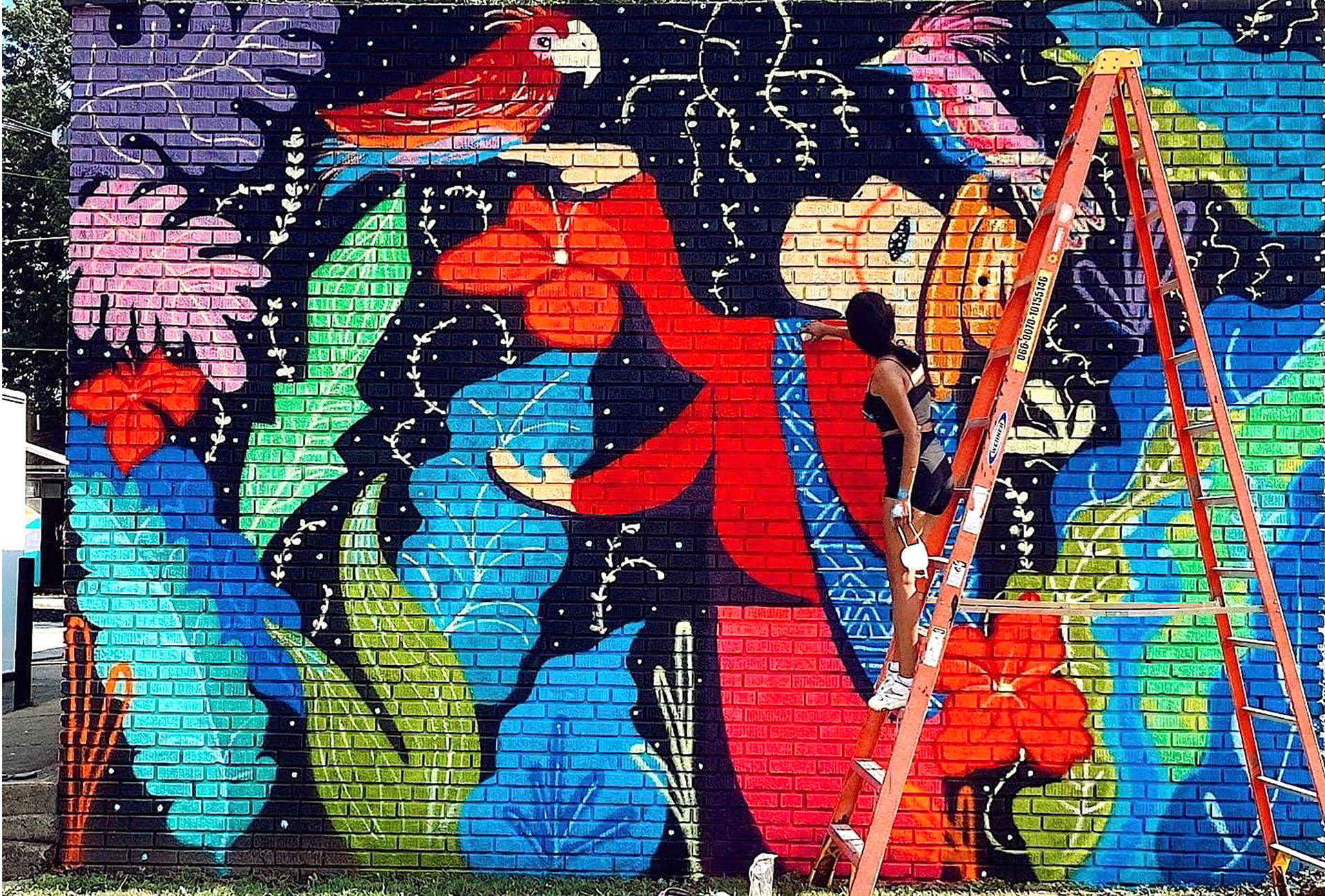
Follow the artist
Two Cents for Arts & Culture
Commit 2% of the $500 million+ Cleveland is receiving in federal ARPA funds to Arts & Culture!
Covid has hit the creative sector hard. An ARPA investment of $10 million helps protect and brings jobs to EVERY neighborhood. We are creative businesses. We are cultural nonprofits. We are individual artists and so much more. We remain anchors for neighborhoods all over the city. ARPA funds will protect one of our greatest assets that is central to Cleveland’s economy and identity.
Artists for ARPA
Led by creative people, for creative people, we’ve created 18 unique and vibrant postcards, featuring artists of all disciplines in all 17 Cleveland City Wards. Take a look through the art below.
Right now, we have the opportunity to acquire more funding for our Creative Workers. Our city has received $511 million in American Rescue Plan Act (ARPA) funds, a pandemic support program enacted by President Biden. We need your help in asking Cleveland City Council to dedicate $10 million of these dollars to our Creative Workforce. This is only 2% of the ARPA funds Cleveland received – that’s only 2 cents on the dollar!
Let’s flood City Hall with powerful postcard messages! Attend an ARPA Postcard Party on Feb 24 or March 3 and Tweet + Email your City Council Member today.
We’re making progress
Recently, Mayor Bibb included a recommendation in his transition report to allocate $10 million to arts and culture. This is an exciting step, but we must help Cleveland City Council understand why their vote in favor of this recommendation is a smart choice. Your voice matters.
Assemble Now
Contact Jasmin Santana in Ward 14
Office Phone Number: 216.664.4238
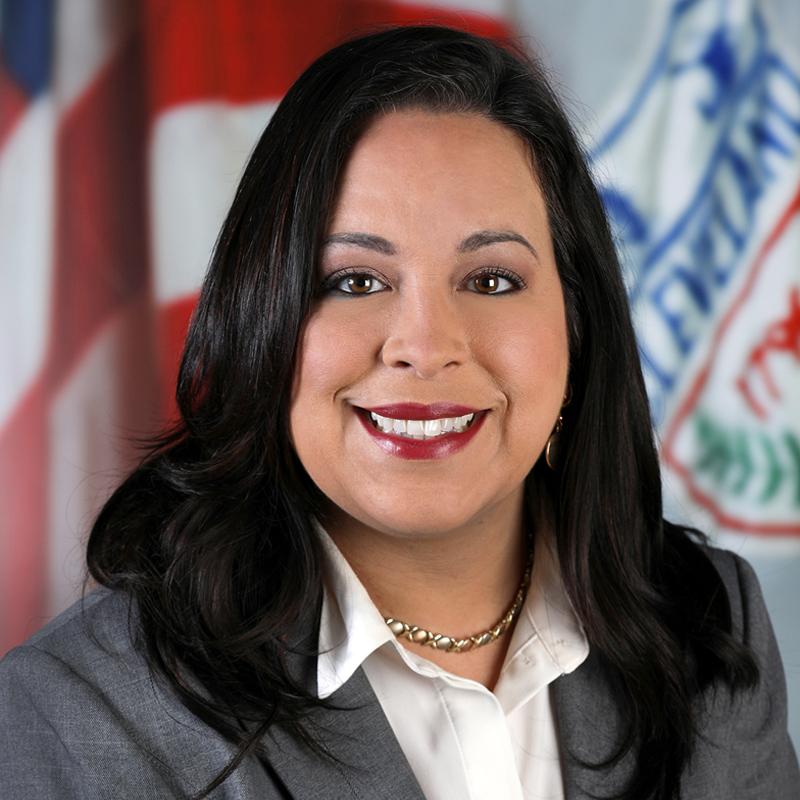
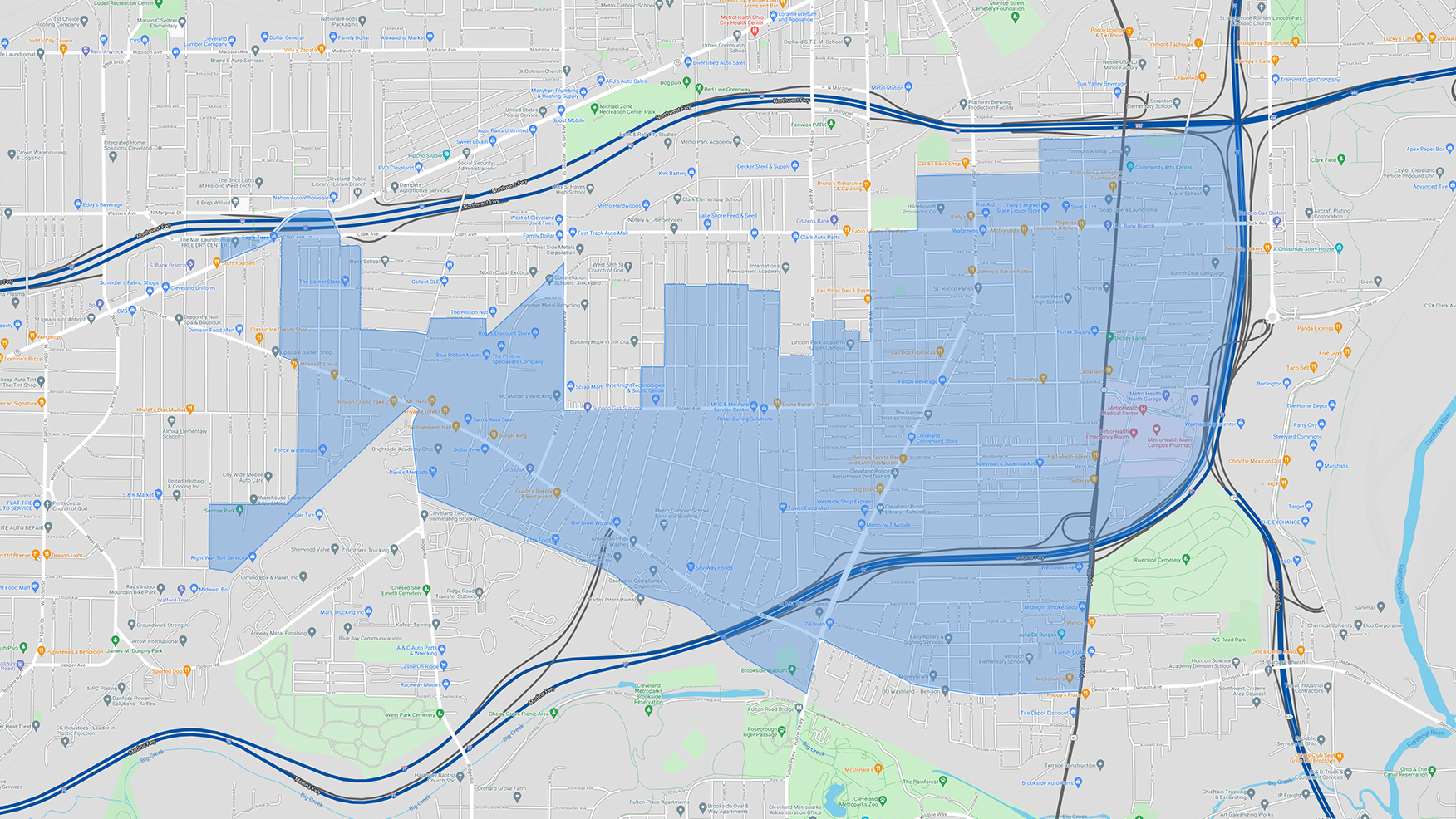
Attend a Postcard Party
Happy Dog, Thursday, February 24, 4:30-6:30
Sankofa Fine Arts, Thursday, March 3, 4:00-6:00


